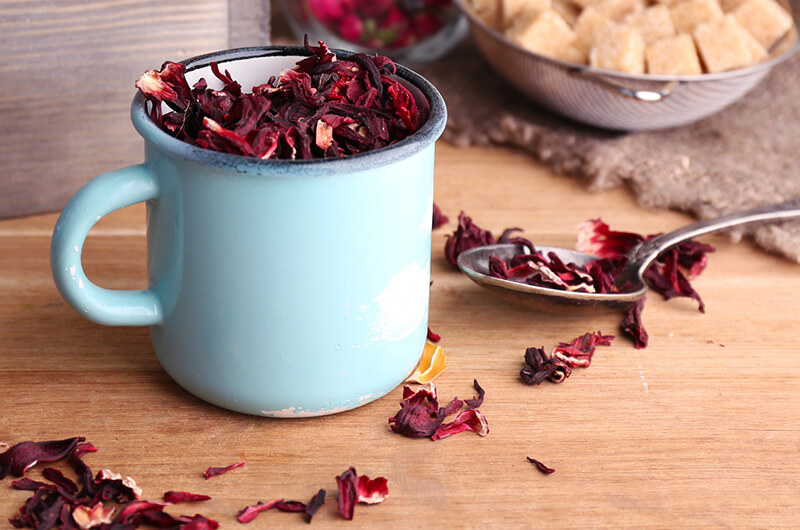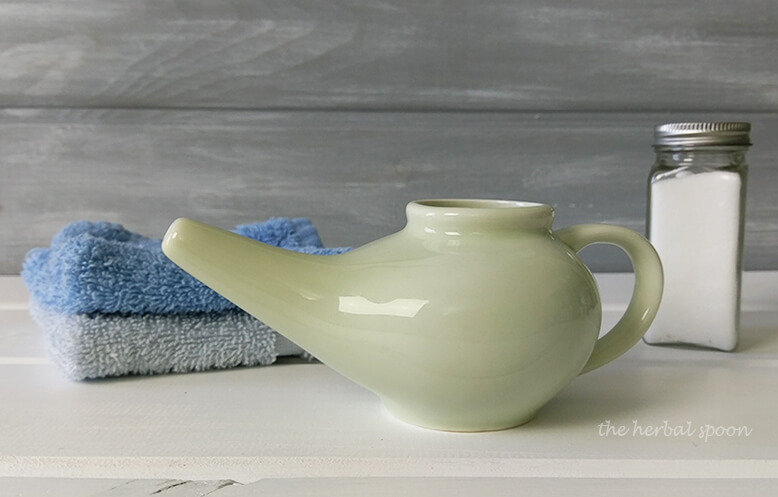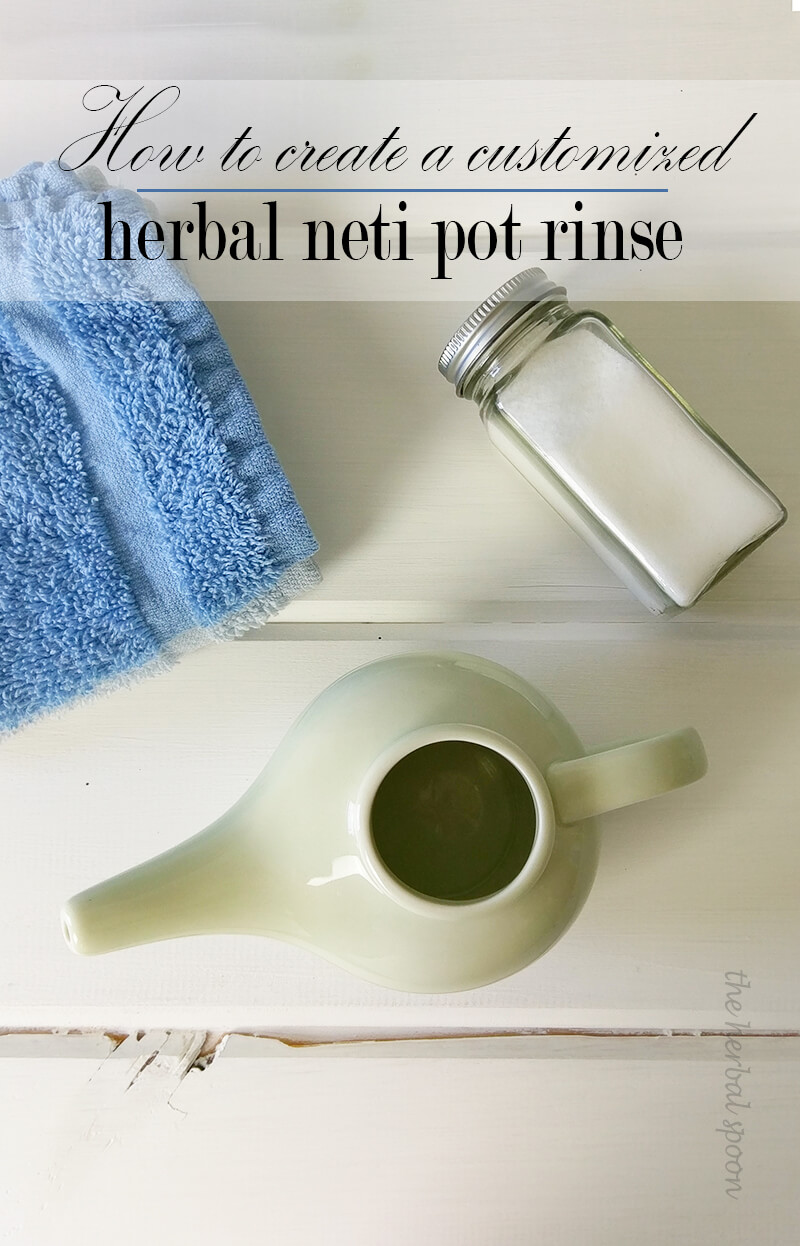You stick what where?! It’s gross, it’s weird, but results are instant! There are plenty of ways to relieve allergy symptoms, (and reverse them for good!), but a nasal wash is one of my favorite. Learn how to use a neti pot and which herbs make the best nasal rinse solutions.
How to Use a Neti Pot for Fast Allergy Relief
Nasal irrigation or nasal washes can be done with all sorts of contraptions, but my favorite is the humble neti pot. It’s a bit tricky at first, but well worth it. The water goes in one nostril and out the other, taking dust, allergens, and toxins out with it.
A study done on children found that sinuses washed with saline solution improved nasal symptoms and reduced the need for antihistamine drugs. Healthcare practitioners have long added baking soda to nasal washes to reduce the histamine activity that causes allergy symptoms.
Neti Pot Recipe
A homemade neti pot solution is easy to make and saves on the expense and excess packaging of the store-bought packets. You can make up a jar of neti pot solution to keep on hand for nasal emergencies. This can be mixed with warm water and used alone, or combined with herbal tea for even more benefits.
Homemeade Neti Pot Solution
- 1 Tablespoon non-iodized salt
- 1 tsp baking soda
- Combine the ingredients and store in a sealed jar to use as needed in a neti pot.
- Use 1/4 tsp of powder for every 1 cup of water.
How to Use Herbs in the Neti Pot
Different herbal teas can be used in a neti pot for more allergy relief benefits. Filter out all plant material before it’s poured into the nose! Here are some options for herbs to use in a neti pot rinse. The following herb information comes from herbalist Jim McDonald.
Soothe Sore Noses
Demulcent herbs soothe mucus membranes to promote healing and are good where there’s dryness and irritation. Comfrey, slippery elm, marshmallow, and violet leaf are all good options. It’s probably not coincidence that violets grow in spring when allergies are most common.
Note: Comfrey is considered toxic to the liver when ingested, however it doesn’t go through the digestive system when used in a nasal rinse. Personally I have no issues using comfrey tea in my neti pot, but it’s best to not too much in the rinse recipe as it’s strong.
Tighten Leaky Tissue
Astringent herbs tighten loose tissues to relieve itchy, watery eyes and sneezing. Demulcent herbs can be combined with astringents to prevent the nose from drying out too much. Surprisingly, goldenrod and ragweed, which can trigger allergies, are also used to relieve them.
Astringent herbs for allergies include:
- Eyebright
- raspberry leaf
- yerba santa
- yerba mansa
- elder
- yarrow flowers and leaves
- self-heal
- rose
Clear Congestion
Decongestant herbs help clear congestion and mucus from the respiratory system. Bee balm can be harsh on the nose, but when it’s combined with soothing plantain the two restore mucus membranes. Some good decongestant herbs for allergies include:
- bee balm
- sage
- thyme
- hyssop
- yerba mansa
- calamus
- elecampane

Vitamin C for the Win
In one review, 74% who used a Vitamin C nasal spray saw less nasal swelling, congestion, and drainage. While the study used synthetic ascorbic acid, rose hips and hibiscus are both very high in natural vitamin C. An infusion of rose hips and/or hibiscus can be used as a nasal wash.
Can I put Essential Oils in My Neti Pot?
I love my essential oils, but in a word, no. Essential oils are amazing things and I do ingest them (safely), but undiluted they damage mucus membranes. The delicate tissue in the nose does best with a straight saline solution or soothing herbs. Essential oils must be diluted in something like honey or an oil before using internally, and that’s not something I want to put up my nose.
Herbal Neti Pot Recipes
A neti pot rinse can be customized to your exact needs, but here are some ideas to get you started. If you have loads of congestion, then you don’t need astringent herbs. If you’re sneezing up a storm, then pile on the astringent herbs. I like to use soothing demulcent herbs in all my nasal wash blends, regardless if there’s congestion or leaking and dripping (source).
Herbal Neti Pot Blend for Drippy Noses
This blend is best for the itching, sneezing, nose blowing type of allergy issues.
- 1 tsp astringent herb (see options above)
- 1 tsp demulcent herb (see options above)
- 1 tsp chamomile flowers
- 2 cups purified or distilled water, boiling hot
Herbal Neti Pot Blend for Congestion and Allergies
This blend works well for allergies accompanied by congestion.
- 1 tsp rose hips or hibiscus
- 1 tsp decongestant herb (like bee balm or thyme, see options above)
- 1 tsp demulcent herb (like plantain or violets)
- Pour the water over the herbs and let steep for about 10 minutes covered.
- Strain the herbs through a coffee filter to make sure NO plant material is left in the tea. An easy way is to line a mug strainer with the coffee filter and pour the tea through.
- Use the tea within 24 hours and discard all leftovers. Fresh tea grows bacteria and other nasties within 1-2 days so it’s best to use fresh!

How to Use a Neti Pot for Allergies
Herbalist Jim McDonald recommends a nasal rinse twice daily during allergy season. Rinsing too much can irritate the membranes so I’ve never done it more than this.
- Use distilled, or boiled and cooled water. Regular tap water can carry all sorts of microbes you don’t want in your nose!
- Add ¼ tsp non-iodized salt (or neti pot solution from above) for every 8 ounces of water.
- Use a pinch of baking soda to help further reduce histamines. Some say this also helps prevent the solution from stinging the nose.
- Fill the neti pot with tea or water and insert the end into one nostril.
- Tilt your head to a 45 degree angle and pour the solution in while you breathe through your mouth.
TIP: You may look like a fish but keep your mouth open or the water will run down the throat and can cause animated choking/coughing.
… Don’t ask me how I know that.
